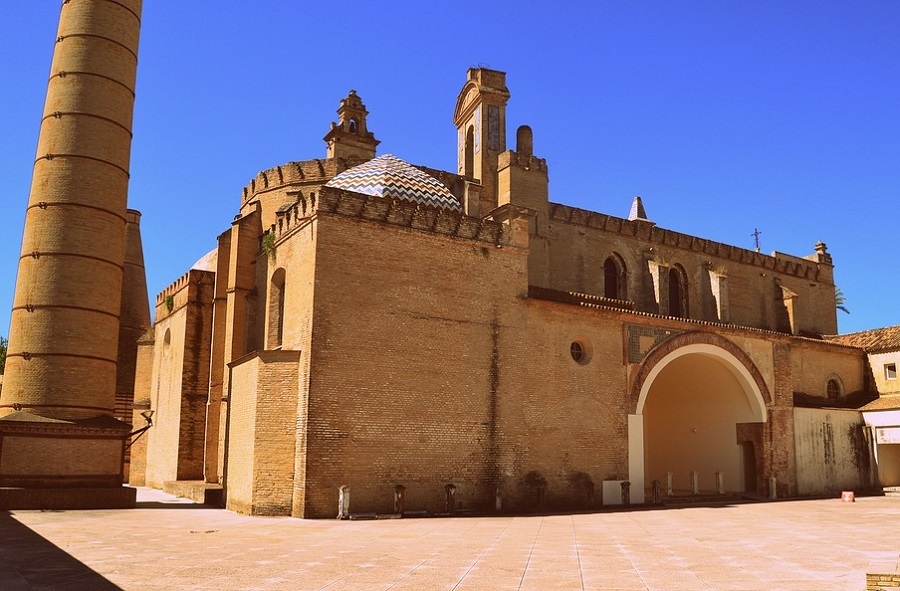
Can you enjoy flamenco in the Isla de la Cartuja in Seville? The answer is affirmative and it is that in the Andalusian capital it has many surprises for the visitor many surprises for the visitor. That has a special colour, the song says so, but it is also a city that has many cultural and leisure proposals for the traveler.
The Isla de la Cartuja is one of those emblematic places that Seville has. This area, embraced by the Guadalquivir River, houses museums, auditoriums, a technology center, a university area, a theme park and, for a few months, El Palacio Andaluz, a flamenco tablao of reference in this city.
This fantastic space is next to the historic center, with the Barqueta and Alamillo bridges as the main references. It hosted the 1992 Universal Exhibition, an event that marked the before and after of this area.
Isla de la Cartuja is one of the surprises that Seville has reserved for visitors. An immense space, cradled by the river, that presumes to house the Monastery of the Cartuja, a religious temple that was place of passage for Christopher Columbus in his journey through America.

This monumental complex, surrounded by gardens, preserves the mark of different artistic styles such as the Mudejar, Gothic, Renaissance, Baroque or nineteenth-century industrial, fruit of the legacy that Franciscans, Carthusians, Almohads, Castilians, Genoese and French left in this emblematic building.
The history of this monastery is very diverse. In the 12th century, it was a pottery factory in pottery cooking ovens, due to the abundance of clays in this area. Afterwards, he has welcomed many kings as tenants, such as Philip II, or personalities such as Saint Teresa of Jesus.
In the nineteenth century, during the War of Independence, the French army made it a headquarters. Later, in the middle of this century, the merchant Carlos Pickman created the English-style earthenware factory, raising ten bottle ovens that gave this building a bonus of originality.
The Monastery of the Cartuja was declared a National Monument in 1964, it became a royal pavilion during Expo 92 and, since 1997, it is the headquarters of the Andalusian Center for Contemporary Art and the Museum of Contemporary Art of Seville. A place that treasures artistic and archaeological heritage of then and proposals of modern art now.
About two hundred meters away, next to the Guadalquivir River, is another emblematic building of this island. The Navigation Pavilion is in the form of an inverted ship and is the work of the Sevillian architect Guillermo Vázquez Consuegra. It was built for the universal exhibition and currently hosts all kinds of exhibitions. Right in front, is Caixaforum, another cultural center that is also the work of Vázquez Consuegra.

Isla de la Cartuja has one of the most central theme parks in the world. Just a few minutes from the historic center, crossing the Barqueta Bridge, from the Alameda or the San Lorenzo neighborhood, fun is guaranteed on Isla Mágica. A place with attractions and shows, which transports visitors to Seville in the 16th century, as well as fabulous enclaves of the Indies.
Concerts and great musical events in Seville are also held in this area of the city, where the Olympic Stadium, the Rocío Jurado Auditorium and the Cartuja Center Cite are located. And for lovers of new performing arts, the Central Theater is one of the national references in its genre.
But the leisure options on Isla de la Cartuja do not end here, far from it. Right next to Isla Mágica, is El Palacio Andaluz, a must-see tablao for flamenco lovers who come to Seville.
Located in the old Pavilion of the Cruzcampo, a building that became very popular during the Exhibition of 92, this tablao hosts a flamenco show that is unique in Andalusia, for the number of people participating in the show and the artistic quality of it.

Every day, more than twenty artists give life to a function that bears the rubric of Emilio Ramírez ‘El Duende’, recognized as one of the best flamenco dancers in Spain. The performance, lasting an hour and a half, is a journey through the different flamenco and traditional flamenco styles, to which is added a piece of Spanish classic and the adaptation of the opera flamenco Carmen, by Bizet.
This flamenco show has been chosen by TVE for the international diffusion of this art, for its visual quality, its artistic value and for being a model and example of the most entrenched Spanish popular culture.
In addition to enjoying the Andalusian singing and dancing with capital letters, in El Palacio Andaluz the visitor can have a drink or dinner while watching the show. The entrance includes a visit to the Museum of Flamenco and Andalusian Art of Seville, an exhibition area with costumes and photos of the artists, as well as other elements and hallmarks of Andalusia, such as wine art or equestrian art, among others.
In ‘The Museum of Flamenco and Andalusian Art’ there is also a recreation of a booth of the April Fair, with all the ornaments and utensils so that the visitor can get an idea of what the environment is like where the traders meet with friends and Family to eat, sing and dance.

In short, Isla de la Cartuja has become a place to visit when a trip to Seville is scheduled. It offers multiple options and is minutes away from the city center. A perfectly communicated area with excellent access from different points of the Andalusian capital.
Therefore, if your next plans are to travel to Seville, take note of the suggestions of leisure and culture that this island has. And, of course, enjoy flamenco on Isla de la Cartuja, a cultural proposal that a visitor should never give up when he is in the Spanish capital, the birthplace of flamenco.
© 2024 El Palacio Andaluz. All rights reserved.